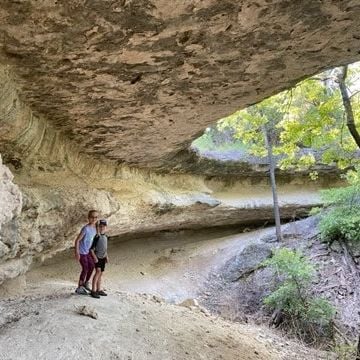What if the future of Texas farming is a plant that’s been here all along? Meet the nopal cactus—an ancient crop making a modern comeback for climate resilience and culinary creativity.
🌵 What Is Nopal—and Why Does It Matter?
Nopal is the Spanish word for the paddles of the prickly pear cactus (Opuntia species), a plant deeply rooted in Mexican and Southwestern food culture. For centuries, nopales have been prized for their adaptability, nutrition, and versatility in cooking.
The plant serves two purposes:
- The paddles (nopales): Tender when young, harvested for cooking.
- The fruit (tunas): Sweet, colorful pears used for jams, candies, and drinks.
🍴 How Is Nopal Eaten?
If you’ve never tried it, you’re not alone. Many Texans have seen prickly pear growing wild without realizing it’s edible. Here’s what to expect:
- Taste: Mild and slightly tart—like green beans with a hint of citrus.
- Texture: Similar to okra, with a slight mucilage (gel) that cooks out with heat.
Common dishes include:
- Nopales a la Mexicana – diced cactus sautéed with tomatoes, onions, and chilies.
- Huevos con nopales – cactus scrambled with eggs for breakfast.
- Grilled nopales – sliced and charred like green peppers, often served in tacos.
- Added to soups, salads, or blended into smoothies for a nutrient boost.
In Mexico, nopales are considered a staple—served in markets as fresh paddles, pickled strips, or blended in salsas. Today, top chefs in Texas—including James Beard semifinalist Victoria Elizondo—are spotlighting nopales on menus, from nopalito salads to grilled paddles in tacos (Houstonia Magazine).
🌱 Why Nopal Is a Climate Hero
Nopal cactus thrives where many crops fail. Its superpowers include:
- Extreme drought tolerance: Stores water in its paddles.
- Soil protection: Reduces erosion and improves land resilience.
- Low input needs: Requires little fertilizer and minimal irrigation.
According to the Food and Agriculture Organization (FAO), prickly pear cactus is one of the most promising crops for dryland farming worldwide. As Texas faces rising temperatures and water scarcity, crops like nopal could reshape what sustainable agriculture looks like. (Source: FAO, “Prickly Pear: A Strategic Crop for Dry Areas”)
🌿 Curious about other climate-smart crops in Texas?
Explore our full series on moringa — from where it grows and what farmers do with it, to hands-on ways to taste tea, press oil, and see the trees up close.
🌍 A Growing Trend in Texas Agriculture
Nopales aren’t just for backyards anymore—they’re entering the conversation as a serious crop for Texas:
- The San Antonio Food Bank plants nopales at Mission San Juan as part of its climate-resilient farming program on 50 acres of UNESCO-designated land.
- Texas A&M AgriLife Extension actively promotes prickly pear as both forage and a viable human food source in arid regions (AgriLife).
- Globally, the FAO names prickly pear a “strategic crop for drylands,” signaling its role in food security for water-scarce areas.
This combination of local action and global recognition shows why nopal is more than a heritage plant—it’s a future-ready crop for Texas agriculture.
⏳ From Ancient Wisdom to Modern Farming
Nopal isn’t new—it’s a cultural cornerstone. Indigenous peoples of Mexico cultivated it for food, medicine, and even dye (cochineal insects thrive on its pads). When Spanish settlers brought European farming systems to the Americas, nopal remained a resilient companion crop—especially in arid landscapes.
Fast forward to today: farmers and food advocates are looking back at heritage crops like nopal to prepare for climate challenges ahead.
🌾 Mission San Juan: Where Heritage Meets the Future
In San Antonio, you don’t have to imagine this future—you can walk through it. The San Antonio Food Bank manages 50 acres at Mission San Juan, part of the only UNESCO World Heritage Site in Texas. Among orchards and demonstration plots, you’ll find rows of nopales growing alongside figs and amaranth—plants chosen for their resilience and cultural roots.
On a farm tour, visitors learn why crops like nopal are more than food—they’re part of a strategy for sustainability, hunger relief, and cultural education.
📍 Book a Mission San Juan Farm Tour →
Your visit supports the Food Bank’s mission to fight hunger and teach climate-smart farming practices.
🌿 Other Places to Explore Nopales in Texas
Mission San Juan isn’t the only place putting cactus back on the map. Across Texas, farms and ranches are helping visitors connect with nopales in their natural settings and cultural traditions. You can also see nopales alongside other healing plants on a guided Medicinal Plant Hike in Glen Rose.
🔬 Nutrition Benefits of Nopales
- High in fiber, aiding digestion and satiety.
- Rich in antioxidants and vitamins (C, A, K).
- Linked to blood sugar regulation and anti-inflammatory effects.
(Sources: Texas A&M AgriLife Extension, Nutrition Journal)
✨ Why It Matters
As Texas warms and droughts intensify, the question isn’t just what we can grow—it’s what we should grow. Nopal offers a roadmap for resilient agriculture rooted in cultural heritage and ecological wisdom.
Or as Mitch Hagney, Director of Food Sustainability at the San Antonio Food Bank, puts it:
“If you’re proud to be a Texan, eat what grows here. Crops like nopal aren’t just history—they’re our future.”
✅ References
- FAO: Prickly Pear: A Strategic Crop for Dry Areas
- Texas A&M AgriLife: Prickly Pear as a Food Source
- Nutrition Research: Nutritional and Functional Properties of Opuntia spp: A review






